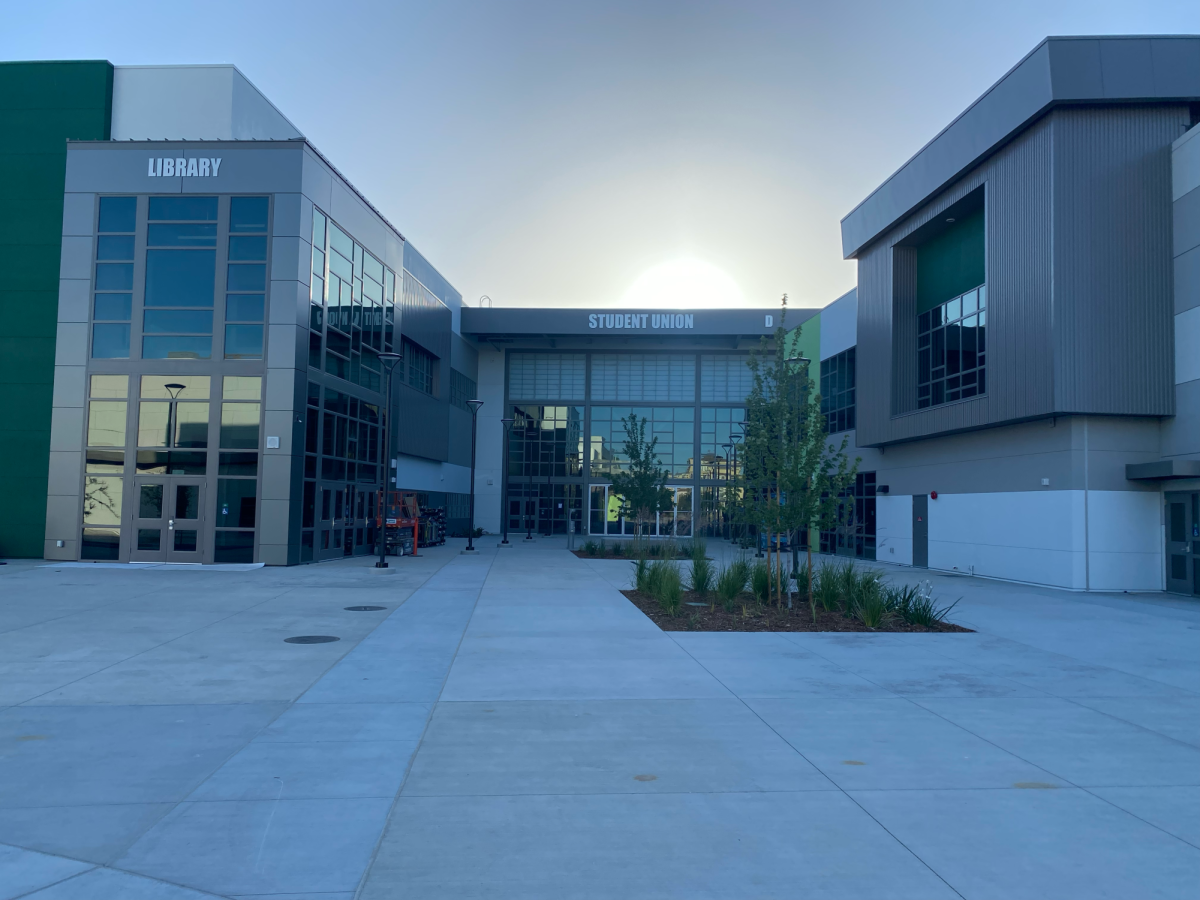After considerable anticipation from the Dublin community, Emerald High appears to finally be coming to fruition. Indeed, recent photos capturing the host of modern amenities the school has established—among them a 600-seat theater, 137-seat lecture hall, kinesiology lab, and even a swimming pool—offer a hopeful image of what the $374 million project might accomplish for its future students. Ultimately, these insights into development have furthered Dublin residents’ hopes for the project’s nearing completion and for the fulfillment of DUSD’s promise to open the school to Emerald students starting in the fall of next year.
Anticipation for the school’s completion has only increased in recent years as Dublin’s only public high school, Dublin High, has seen swelling student enrollment. Clamor for completion became even more intense with the introduction of Emerald High students to Dublin High’s campus, who have occupied the portables as they await their future school’s construction. Emerald High students themselves, too, have shared in this call for completion—a product of a confusing arrangement in which Emerald High students are formally recognized as independent of their host school but are, in practice, a part of it. In fact, many Emerald High students have expressed dissatisfaction with this confusion of identity as a result of their situation in the portables.
“I feel like [DHS] is my school as much as EHS, it’s hard to feel the difference,” an anonymous Emerald High student says. “I don’t think EHS has really built a distinct identity cuz . . . DHS has things like the night rally or football games etc. [that we get to take part in], but a big part of that is having a campus to associate with the name . . . it feels like it’s still DHS’s game when we play sports. [And] EHS can do stuff on DHS’s campus thanks to DHS’s help during the pre-new campus stuff, but it doesn’t feel like ours.”
Altogether, then, the student reasons that the delayed completion of Emerald High has prevented Emerald High students from fostering a tangible school identity.
“The main thing is that right now everything we do really needs DHS’s campus or DHS so it’s hard for us to set ourselves apart and say ‘we’re our own school.’”
Despite these concerns, though, the student is hopeful the opening of Emerald High can resolve these difficulties.
“I think once we get our own campus we can probably make a better community,” the student concludes. “I can hardly believe that we are going to have a new campus next year!”
Indeed, this student’s predictions are likely correct: with an estimated full student body of 2,500, Emerald High might be able to fully realize its identity as a full-fledged school come the fall. The rest of the Dublin community may also find reason to celebrate the nearing completion of Emerald High: by relieving the burden currently placed on Dublin High, the entire Dublin community benefits from the decongestion and redistribution of students combating an increasing city population. In light of these different interests, then, Emerald High might be an opportunity not only for internal unity among Emerald High students but city-wide unity as the project, in different ways, comes to benefit us all.




































